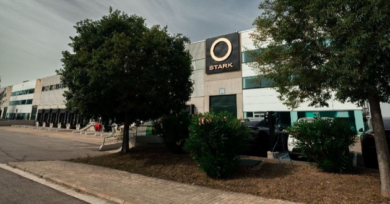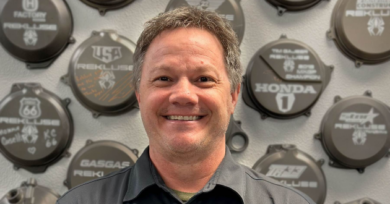Steady as she goes
By Jeff Hemmel
Contributing writer
Chart the success of the PWC industry during the past several years and the result will be a relatively flat, horizontal line. Some would argue the industry has failed to grow. Others would counter that just holding a steady course is quite an achievement given the economy during the last few seasons.
Truth be told, with economic times getting tough and gas prices heading frighteningly skyward, the PWC industry’s ability to hang tough in 2007 has been one of the lone bright spots in the overall boating market.
CRUNCH TIME
While most OEMs refer to 2007 as a flat year, in terms of hard numbers the industry actually shrank, although the loss was minimal. Different pundits use different numbers, but we’ll look at state registrations, a reliable snapshot of year-over-year growth. Supplied by Statistical Surveys Inc., the Michigan-based firm that studies the marine, manufactured housing and RV industries, registration data shows sales were down just more than 3 percent in ’07, with a volume of 79,936 craft compared to the 82,578 recorded in 2006.
As always, the data behind those numbers is compelling. Sea-Doo remains the industry leader with 35,395 units registered on the year. The company also, however, recorded the biggest loss of any manufacturer, dropping 7.4 percent from last year’s 38,228 tally.
Yamaha remains No. 2, but also dropped, its 4.1-percent decrease reflective of a 24,535 total in ’07 vs. a 25,572 tally in ’06. Honda also recorded a drop in sales (5.9 percent), with 7,225 craft recorded in 2007. While Polaris is no longer actively in the market, its craft remain in the pipeline. Last year saw 71 units, as opposed to 175 in 2006. A statistically large 59.4 percent drop, but of little effect on the industry.
Where the perennial leaders lost, Kawasaki posted significant gains. Riding the strength of its potent Ultra 250, named Watercraft of the Year by Watercraft World magazine, Kawasaki actually enjoyed a 16.1 percent jump in 2007, selling 12,681 craft, nearly 2,000 more than the previous year. Kawasaki’s own reports are even better, with the company reporting a 22 percent increase in sales.
Overall, the manufacturer breakdown shows Sea-Doo holding on to just more than 44 percent of the market, Yamaha just shy of 31 percent, Kawasaki at 16 percent and Honda at 9 percent. Polaris, as well as Austrian manufacturer Hydrospace, are statistically insignificant.
Looking at how 2008 has begun is also of interest, but in fairness most new models have only recently been made available. Through February, year-over-year, perennial leaders Florida, Texas and California are tallying the most sales, although only Texas saw an increase. Florida is actually down nearly 12 percent, while California is off significantly at 25 percent. The overall picture shows an early 13 percent drop. Again, however, key craft with a great deal of pent-up demand — Yamaha’s SHO models and Sea-Doo’s RXT-X and RXP-X — are not factored into the picture. Sales of both are reported to be brisk. Honda’s late release of the F-15X models also could significantly impact that company’s sales.
SILVER LINING
Despite the flat sales picture and seemingly worsening economy, key industry players remain upbeat.
“Anytime our U.S. economy changes, it affects our business,” concedes Kawasaki JET SKI Product Manager Croft Long. “Consumer prices are up, as well as manufacturing costs. We do expect some buyers to postpone their planned PWC purchase, but dealers also tell us of more boat owners purchasing PWC to reduce their costs but stay on the water.
“Remember, the average PWC buyer has a higher income than the average person, and they are a lot more committed to their sport than the average person. Even when their budget is tight, they have to ride. They might skip a weekend on the water; they are not going to skip a season.”
“We faced recessions in the past, and we performed well,” agreed Sea-Doo’s Louis Levesque. “For example when gas goes up, PWC become a cheaper alternative than a boat. Same comment applies for the cost of the unit; it’s cheaper to buy a GTI than a conventional sterndrive. For sure the economic condition will challenge our market, but we still hope that we will perform well.”
Yamaha’s Mark Speaks says his company is cognizant of the effect of rising fuel prices on the company’s customers but contends that a day on the water is less expensive than many other popular family outings.
“We believe the fun factor from boating cannot be matched from other activities,” said Speaks, “making it a one-of-a-kind experience and long-term lifestyle choice for families. It is this passion that we think will reign through the ups and downs of market swings.”
Speaks also points out that even Yamaha’s highest-performance model runs on regular octane, and that the company offers some of the most fuel-efficient models on the market.
INTO FOCUS
As to the focus in the coming year, manufacturers will continue to ride the latest trend toward renewed high-performance, while being careful not to overlook the overall market picture. That includes continuing to market compelling craft at the lower end of the price scale in order to bring in the next generation of enthusiasts. The goal? To keep the barrier of entry low for families, and peak the interest of current owners in trading up to new models.
“Our strategy for the past several years has been to bring as many people as possible into the PWC lifestyle,” said Speaks. “We’ve been successful in doing this through our VX Series, which has gone on to be the bestseller in the industry year-over-year. We know that as we bring these people in, the PWC lifestyle will become a more important part of their lives, and they will look for more feature-rich performance models.”
Sea-Doo, with its GTI line has done likewise, as has Kawasaki, with its well priced STX-12F.
“Consumers will opt for innovation and for advancements that create tangible benefits,” said Speaks. “They will buy products that affect their lives in a positive way. Our goal is to provide the products that give our customers the best return on their investment — the most fun for their dollars — the best, most memorable times. We will continue to emphasize this in our business planning, and we believe that we will be rewarded with a steadily growing business in return.”
“The PWC industry needs new innovation,” agreed Levesque. “Having four-stroke and higher horsepower is good, but as an innovative OEM, we need to go further. We did it in the past with the 3D. Results were low, but we created a new concept. It’s important for us to always challenge the way we see PWC.”




